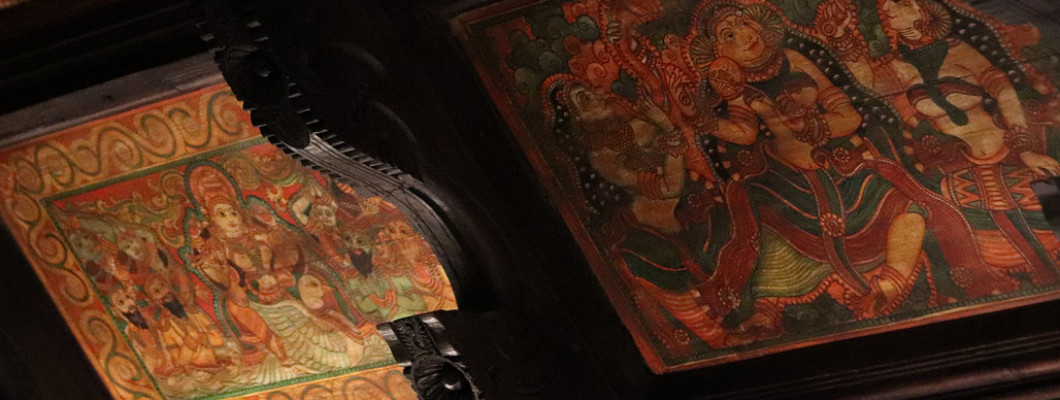

1. Kerala Mural Painting:
The term 'mural' originates from the Latin word 'murus,' meaning 'wall,' and refers to paintings created on large, enduring surfaces such as walls and ceilings. Kerala murals are particularly notable for their thematic simplicity and idealistic representations of humans, animals, and trees, showcasing exceptional technical skill. These artworks are characterized by rich, delicate strokes and vibrant colors that epitomize the essence of Kerala. The color palette, known as Panchvarna, consists of five hues—yellow, red, green, black, and white—crafted from mineral pigments and vegetable dyes. The themes often draw from iconic symbols found in Hindu mythology, particularly the Puranas, including the Ramayana and Mahabharata, and are rendered with remarkable stylistic brilliance. The expressions captured in these murals reflect a high level of artistic mastery, making them a significant aspect of Kerala's cultural heritage.

2. Wood Carving:
Artisans transform ordinary wood into stunning masterpieces, employing techniques passed down through generations to create intricate designs that often depict themes from nature, mythology, and local folklore. Common motifs include floral patterns, revered deities, and scenes from Hindu epics, each reflecting exceptional craftsmanship. Utilizing locally sourced hardwoods such as teak and rosewood, these creations are not only durable but also possess a unique character. Kerala wood carvings encompass a wide range of products, including ornate furniture, intricate temple sculptures, and everyday utensils, earning a reputation for beauty and precision both domestically and internationally.

3. Kasargod Weaving:
Kasaragod weaving represents one of the four esteemed traditional weaving arts in Kerala, distinguished by its commitment to sustainability and eco-friendliness, as all processes, raw materials, and tools are meticulously handmade and sourced from natural resources. The recent introduction of silk blend sarees, which incorporate vat dye to enhance durability, has resulted in a growing patronage due to their exceptional quality and longevity. These sarees are recognized for their fine thread counts of 60s, 80s, and 100s, positioning them among the most durable cotton sarees available. Furthermore, the integration of blended silk has granted these sarees a Geographical Indicator (GI) tag, thereby solidifying their esteemed reputation. This harmonious blend of tradition and innovation ensures that Kasaragod weaving continues to flourish, producing timeless pieces that are highly valued by discerning consumers.
4. Bell Metal:
The renowned bell metal craft of Payyanur exemplifies the enduring nature of traditional crafts, sustained through local practices and community demand. Centered around the Sri Subramanya Swami Temple in Payyanur, Kannur, this art form has been meticulously practiced for generations, embodying both cultural heritage and artisanal skill. The crafting process is dramatic and labor-intensive, involving multiple artisans who engage in strenuous manual efforts to create intricate bell metal items. It is the deep devotion to their craft, coupled with a consistent demand for these unique products, that ensures the survival and vitality of this age-old tradition. This vibrant craft not only reflects the artistic prowess of the region but also serves as a testament to the cultural significance of craftsmanship in Kerala.
5. Metal Mirror:
The Metal Mirror craft of Aranmula, Kerala, is a remarkable testament to the region's rich artisanal heritage and ingenuity. This unique craft, which dates back over 2,000 years, involves the intricate process of creating mirrors using a special alloy of metals, primarily copper and tin. Artisans skillfully polish the metal surface to achieve a reflective quality that rivals contemporary glass mirrors. What sets Aranmula mirrors apart is not only their exceptional craftsmanship but also the traditional techniques passed down through generations, often involving rituals and community participation. While these mirrors were once highly esteemed, their significance has diminished in contemporary times due to the advancement of modern equipment and technology. Nevertheless, they continue to represent cultural importance and serve a vital role in religious ceremonies and rituals. The artisans of Aranmula take great pride in their work, as each mirror is a reflection of their dedication and artistry, making the Metal Mirror craft a cherished symbol of Kerala's vibrant cultural landscape.
6. Bamboo Craft:
Wayanad, located in northeastern Kerala, is famous for its bamboo craft, which is vital to the rural economy by providing part-time employment to many cultivators. Local artisans create a variety of beautiful products, including mats, curtains, calendar stands, and jewelry, using the abundant bamboo found in home gardens and forests. The history of bamboo craftsmanship in the region dates back to the 14th century, noted by the Arab traveler Ibn Battuta, who observed bamboo mats used as sails on Chinese ships. Today, these intricately woven mats remain significant, with artisan communities thriving in Aryanad (Ernakulam), Dedunganda, Angamaly (Thiruvananthapuram), and Wayanad.

7. Coconut Shell:
Coconut shell craft represents a significant traditional art form in Kerala, recognized for producing eco-friendly and durable products that maintain a lightweight quality. With the increasing emphasis on sustainable practices, artisans have diversified their offerings beyond conventional cooking utensils to encompass a wide array of uniquely designed items, including keychains, decorative bowls, and jewelry. The origins of this craft can be traced to the Vishwakarma community, historically engaged in sword making and ivory carving, who began experimenting with coconut shells as a material for crafting. Initially utilized as cooking fuel, the shells have since been transformed into aesthetically pleasing household items and decorative pieces. Wayanad, a picturesque district in Kerala, is particularly renowned for its coconut shell crafts, where skilled artisans expertly carve and shape these shells, thereby showcasing both creativity and craftsmanship while promoting environmentally sustainable practices.
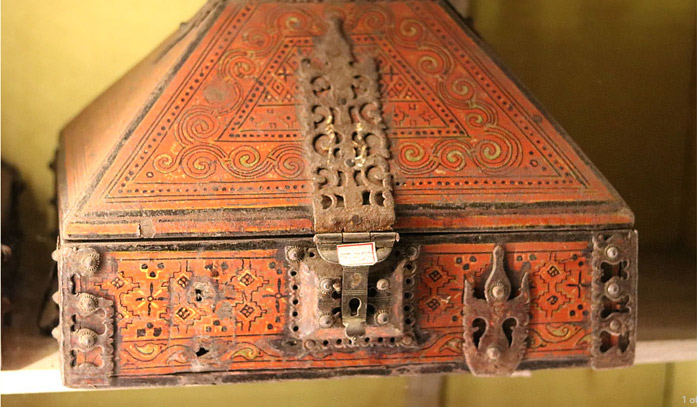
8. Nettur Petti:
The Nettur Petti, a signature wooden box from Kerala, is a remarkable embodiment of the region's craftsmanship, originally hailing from the northern parts but now primarily found in southern Kerala. This exquisite box, often referred to as the jewelry box, is a sophisticated amalgamation of various crafting techniques and artistic skills, characterized by its mathematical composition rooted in ‘Tachu sastram,’ an ancient architectural science unique to Kerala. Traditionally made from teak and rosewood, the Nettur Petti features beautifully hand-crafted brass fixtures and intricately painted flora and fauna, symbolizing the architectural elegance of the region. Initially utilized by wealthy families and aristocrats for storing valuables and ornaments, it was once known as the ‘Aada Petti.’ The box is designed with multiple compartments and a secret chamber, reflecting both functionality and artistry. However, with the rise of metal cupboards and lockers, the Nettur Petti has seen a decline in use. Despite this, its craftsmanship remains revered, with variations of the name—such as Malabar box and Amada Petti—reflecting its cultural significance across different parts of Kerala. The shape and construction of the Nettur Petti are often likened to traditional Kerala houses, with craftsmen continuing to adhere to the original principles that make this craft uniquely enduring.
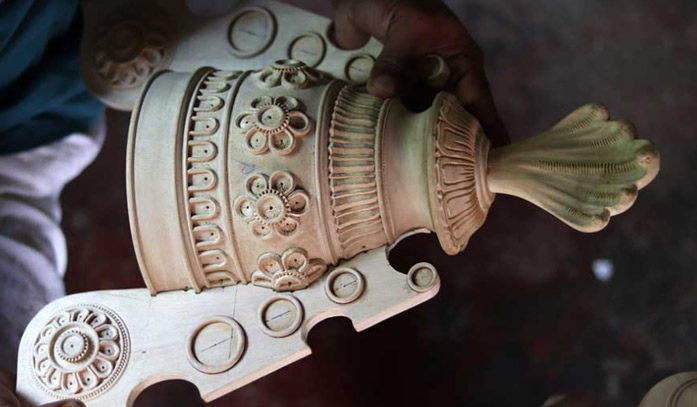
9. Kathakali Headgear:
Kathakali, derived from the Malayalam words "Katha" (story) and "Kali" (play), is a vibrant theatrical art form that enacts stories primarily from the Mahabharata and Ramayana. Originating in the village of Vellinezhi in Palakkad district, renowned as a Kalagramam (art village), Kathakali involves the intricate craftsmanship of headgear and costumes, with at least one member from each household typically engaged in this art. Performances follow a structured format known as "Attakatha," where actors convey narratives through expressive dance movements and distinct facial expressions, utilizing 24 prime mudras and 9 facial expressions. The characters are distinguished by varying makeup styles, with seven different styles representing archetypal roles; for instance, characters with green faces symbolize goodness, including deities like Krishna and Vishnu. Traditionally performed by men, Kathakali now welcomes female actors as well. Accompanied by a band of musicians who enhance the emotional depth of the performance with distinct musical pieces, Kathakali plays often feature Sanskrit shlokas and Malayalam padams. While over 500 written plays exist, fewer than 50 are currently performed, mostly those composed before the 20th century. Historically, these performances took place at night, with some epic tales spanning two consecutive nights, but today, a typical Kathakali play lasts about four hours, captivating audiences with its dramatic storytelling and elaborate artistry.
10. Indo-Jewish embroidery:
Indo-Jewish embroidery, along with spinning and shadow work, is a distinctive craft found in the heritage-rich area of Mattancherry in Ernakulam district, Kerala. Situated near one of the oldest Jewish synagogues in the world, this region is home to the largest settlement of Jews in India, who arrived after being expelled from Portugal in 1492 by the Alhambra Decree. They settled in what is now known as Jew Street, where they cultivated the intricate art of Jewish embroidery, which evolved into Indo-Jewish embroidery, reflecting a blend of Jewish and Indian styles. Although the Cochin Jews migrated back to Israel in 1948 following its formation, the art form was imparted to local artisans, ensuring its preservation. Jew Town, established on land granted by the King of Kochi, HH Kesava Varma, in 1567, symbolizes the king's support for the Jewish community, which had faced displacement. The term "Mattan" in Hebrew signifies a donation, honoring the king's compassion for the Jewish families, particularly in light of Joseph Rabban, a notable figure in their history. The synagogue's location next to the Pazhayannoor Sree Krishna Temple further exemplifies the harmonious coexistence of cultures, as the king is revered in daily prayers by the Jewish community, highlighting his role as a protector of their faith and traditions.

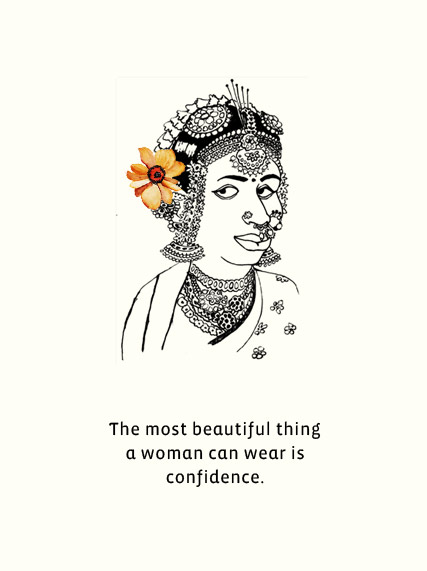

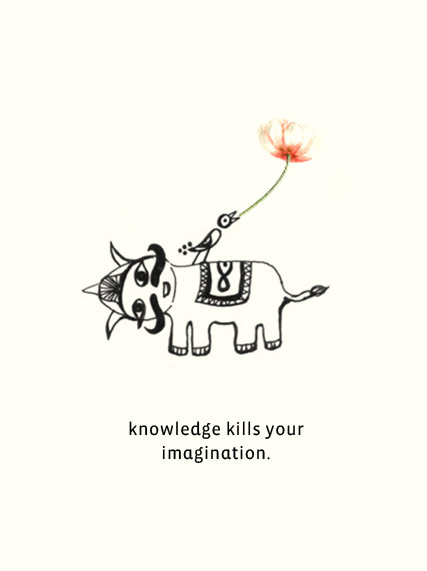

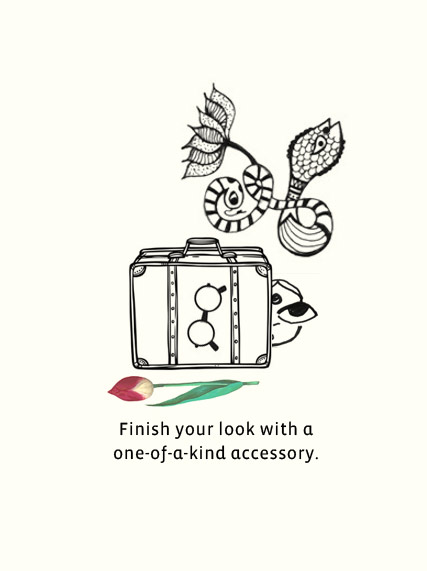




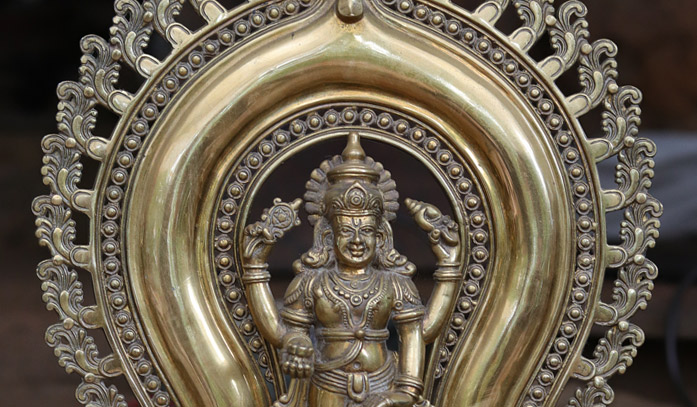
Leave a Comment